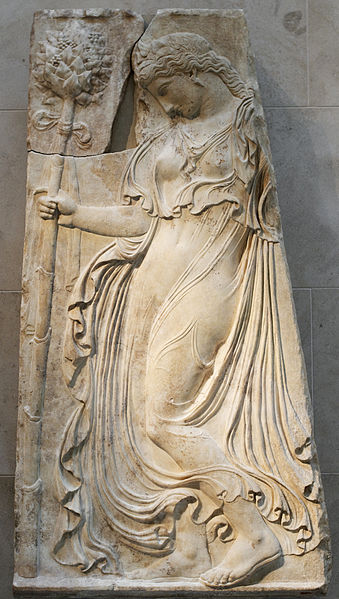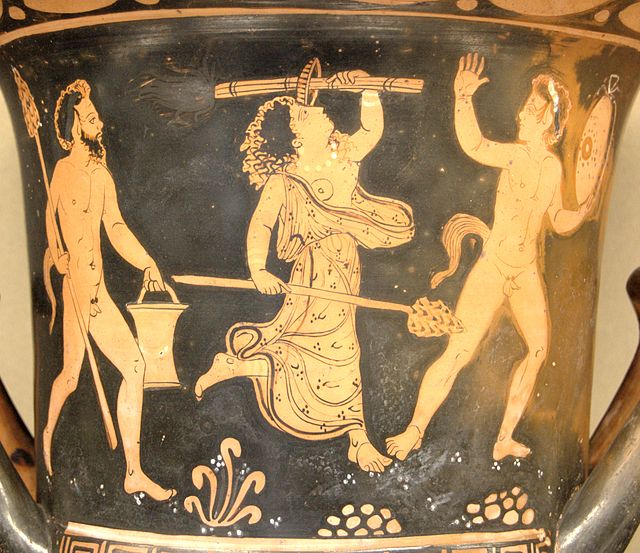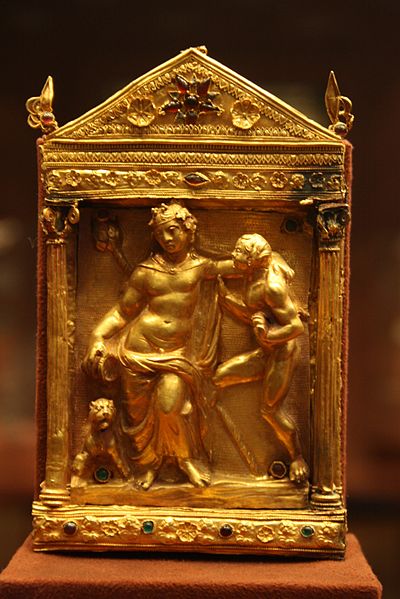In Greek mythology, maenads were the female followers of Dionysus and the most significant members of the thiasus, the god's retinue.
Their name, which comes from μαίνομαι, literally translates as 'raving ones'. Maenads were known as Bassarids, Bacchae, or Bacchantes in Roman mythology after the penchant of the equivalent Roman god, Bacchus, to wear a bassaris or fox skin.
Maenad carrying a thyrsus and a leopard with a snake rolled up over her head. Tondo of an ancient Greek Attic white-ground kylix 490–480 BC from Vulci. Staatliche Antikensammlungen, Munich, Germany.
Dancing Maenad Roman copy of Greek original attributed to Kallimachos c. 425–400 BCE at the Metropolitan Museum of Art
Dancing maenad. Detail from an ancient Greek Paestum red figure skyphos, made by Python, c. 330–320 BC, British Museum, London.
Two satyrs and a maenad. Side A from an ancient Greek red figure calyx-krater from Apulia, 380–370 BC. Louvre, Paris.
In ancient Greek religion and myth, Dionysus is the god of wine-making, orchards and fruit, vegetation, fertility, festivity, insanity, ritual madness, religious ecstasy, and theatre. He was also known as Bacchus by the Greeks for a frenzy he is said to induce called baccheia. As Dionysus Eleutherius, his wine, music, and ecstatic dance free his followers from self-conscious fear and care, and subvert the oppressive restraints of the powerful. His thyrsus, a fennel-stem sceptre, sometimes wound with ivy and dripping with honey, is both a beneficent wand and a weapon used to destroy those who oppose his cult and the freedoms he represents. Those who partake of his mysteries are believed to become possessed and empowered by the god himself.
Second-century Roman statue of Dionysus, after a Hellenistic model (ex-coll. Cardinal Richelieu, Louvre).
Dionysus extending a drinking cup (kantharos) (late sixth century BC)
Dionysus triumph, a mosaic from the House of Poseidon, Zeugma Mosaic Museum.
Golden naiskos with Dionysus, 2nd cent. BC.








